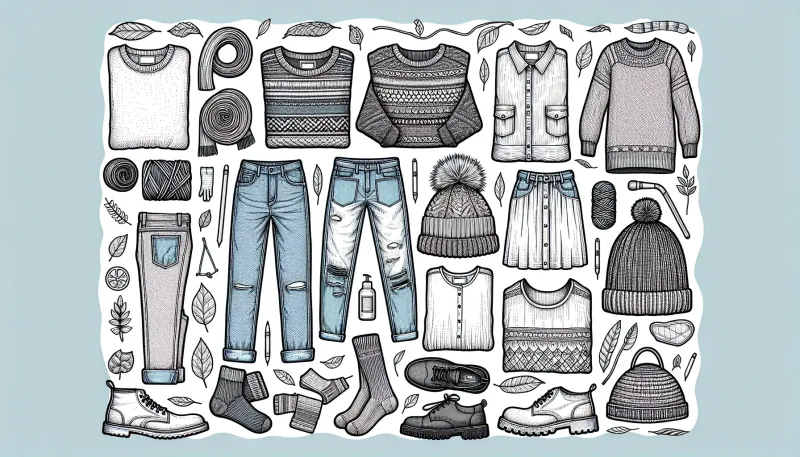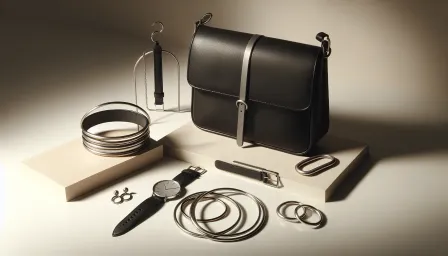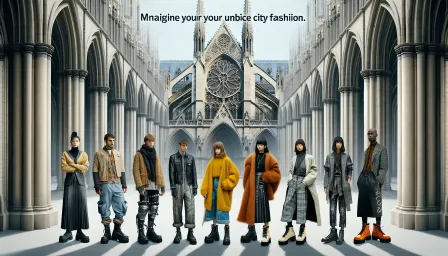Top 10 Eco-friendly Clothing Options for a Sustainable Wardrobe

Discover the top 10 eco-friendly clothing options to build a sustainable wardrobe. Learn how to make environmentally conscious choices with these ethically produced and durable fashion items.
As environmental concerns become more pressing, the need for sustainable fashion has never been greater. Transitioning to eco-friendly clothing options is a step towards minimizing our ecological footprint. This article will provide you with the top 10 eco-friendly clothing options to help you build a sustainable wardrobe that aligns with your environmental values.
1. Organic Cotton Clothing
Organic cotton is grown without the use of harmful pesticides, fertilizers, or genetically modified organisms (GMOs). It is a sustainable alternative to conventional cotton, which is notorious for its environmental toll. Organic cotton also tends to be softer, durable, and hypoallergenic, making it a superior choice for sensitive skin.
Brands to Consider
- Pact
- People Tree
- Thought Clothing
2. Recycled Polyester
Recycled polyester is made from post-consumer plastic waste, such as discarded plastic bottles. By diverting plastic from landfills and oceans, recycled polyester reduces the demand for virgin polyester and helps conserve natural resources. This material is durable, moisture-wicking, and retains color well.
Brands to Consider
- Patagonia
- Veja
- Girlfriend Collective
3. Hemp Clothing
Hemp is a highly sustainable crop that grows quickly with minimal water and no pesticides. Hemp fabric is durable, breathable, and becomes softer with each wash. It is also biodegradable, making it an environmentally friendly option for those seeking to minimize waste.
Brands to Consider
- Jungmaven
- Hempy’s
- Beaumont Organic
4. Bamboo Fiber Clothing
Bamboo is another fast-growing crop that requires little water and no pesticides. Bamboo fibers can be spun into fabric that is soft, breathable, and naturally moisture-wicking. However, it’s crucial to choose brands that use environmentally friendly processing methods to ensure true sustainability.
Brands to Consider
- Boody
- Cariloha
- Thought Clothing
5. Tencel (Lyocell)
Tencel, also known as Lyocell, is made from sustainably sourced wood pulp, typically from eucalyptus trees. The processing of Tencel is closed-loop, meaning that nearly all the solvents used are recycled. Tencel fabric is soft, breathable, and resistant to wrinkles, making it a great addition to any eco-friendly wardrobe.
Brands to Consider
- Reformation
- Amour Vert
- Seasalt Cornwall
6. Linen
Linen is derived from the flax plant, which can be grown with minimal water and no pesticides. Linen is highly durable, breathable, and has natural antibacterial properties. These attributes make it a popular choice for summer clothing and an excellent staple for a sustainable wardrobe.
Brands to Consider
- Eileen Fisher
- MagicLinen
- Not Perfect Linen
7. Econyl
Econyl is a regenerated nylon made from waste such as discarded fishing nets and fabric scraps. By repurposing these materials, Econyl reduces the need for new synthetic fibers and helps clean up the environment. The fabric is strong, versatile, and widely used in swimwear and activewear.
Brands to Consider
- Outerknown
- Mara Hoffman
- Aurora Swim
8. Cork Fabric
Cork is harvested from the bark of cork oak trees without harming the tree itself. This renewable resource can be turned into a unique, durable, and water-resistant fabric. Cork fabric is often used for accessories like bags and shoes and is a fantastic vegan alternative to leather.
Brands to Consider
- Corkor
- Elvis & Kresse
- Nuuwaï
9. Reclaimed Wool
Reclaimed wool is produced by recycling pre- and post-consumer woolen garments and textiles. By repurposing wool, the environmental impact of sheep farming is reduced, and waste is minimized. Reclaimed wool maintains the warmth, durability, and natural properties of virgin wool, making it an excellent eco-friendly clothing option.
Brands to Consider
- Wool and the Gang
- Patagonia
- PrAna
10. Upcycled Clothing
Upcycling involves repurposing old or discarded clothing and textiles to create new, fashionable items. This reduces waste and lessens the demand for new resources. Each upcycled garment is unique, often incorporating elements from multiple sources. Upcycling fosters creativity and individuality, making it a fantastic option for sustainable fashion enthusiasts.
Brands to Consider
- Zero Waste Daniel
- Tonlé
- Fanfare Label
Conclusion
Building a sustainable wardrobe is an important step towards reducing our environmental impact. By choosing eco-friendly clothing options such as organic cotton, recycled polyester, hemp, and other sustainable materials, we can contribute to a more sustainable future. Remember to support brands that prioritize ethical production methods and strive for transparency in their supply chains. Together, we can make a positive difference in the fashion industry and protect our planet for future generations.



























